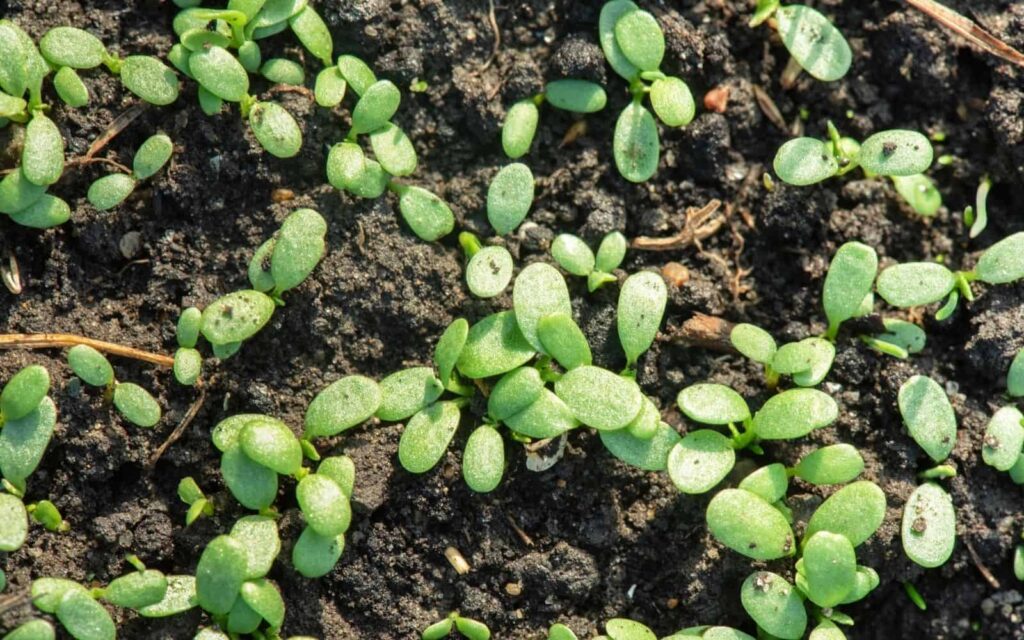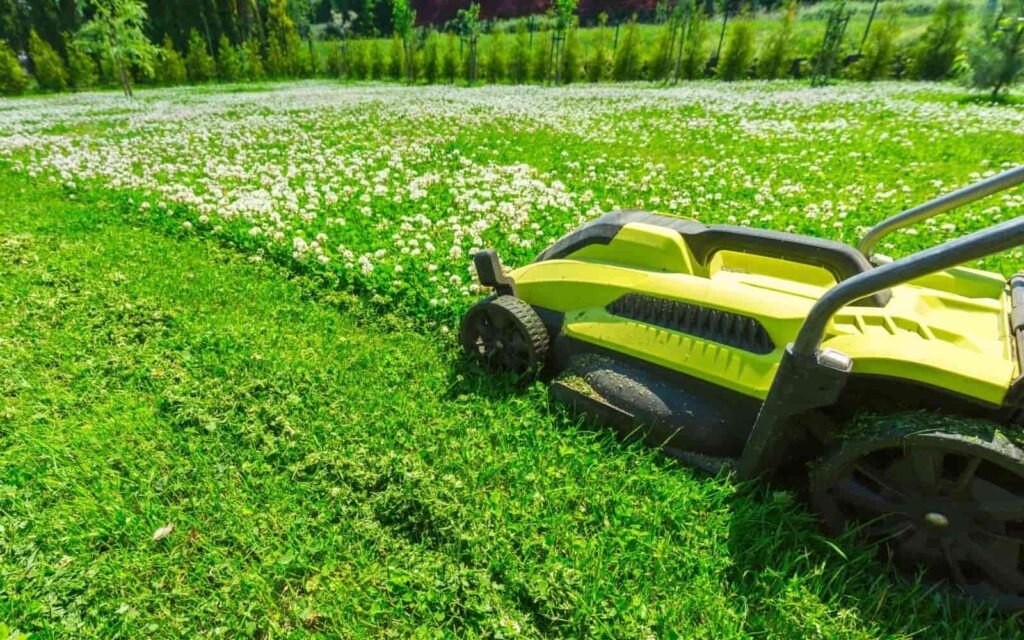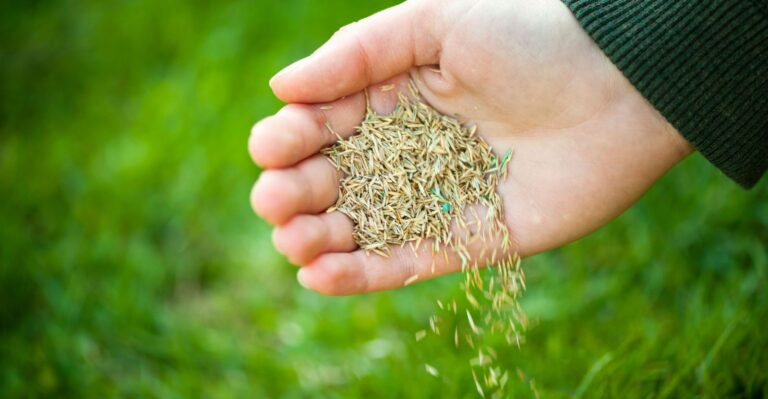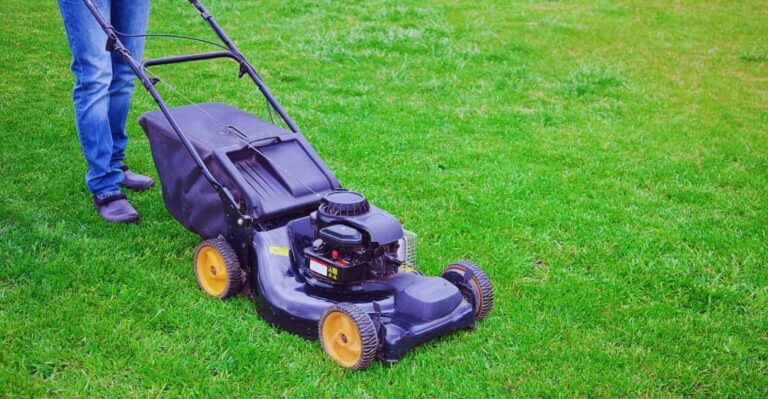Amazon has put together some great Home Gift Deals – save money and get your shopping done at the comfort of your home! Click here to see deals on Amazon
You may have heard of clover as a little four-leaf patch that occasionally pops up in your lawn. These are a valuable part of any green environment, whether in a garden, pasture, or yard.
It doesn’t need much maintenance to stay green. Growing your micro clover lawn is easy. All you need are clover seeds and some time. This article will teach you how to grow it on your lawn from scratch.
What is a micro clover lawn?
Micro clover is a smaller species of white clover with tiny leaves and fewer white flowers. This is a type of legume that absorbs nitrogen from the air. It’s made of small clover seeds. It’s a great way to keep a property looking healthy and add some colors.
The larger variety of this species is white clover, a weed due to its aggressive growth. You have to apply a broadleaf herbicide to control it. However, micro clover isn’t invasive. The small size micro clover grows close to the ground without forming any clump and is hardy to USDA zone 3.
The tiny leaves of micro clover are about one-third the size of Dutch white clover. They’re an excellent choice for anyone who doesn’t have much time to spend on their lawn or has trouble maintaining their property correctly.
What does a micro clover lawn look like?
Micro clover lawns are the newer, better way to create a beautiful lawn. With it, you can have a fully lush green lawn without needing to spend a lot of time maintaining it.
You can use it in gardens, yards, and backyards for an attractive appearance. It provides a softer surface for all activities, from playing sports to lounging around.
This is very drought tolerant and needs almost 25% less water than traditional grass lawns. It produces tiny flowers during early spring to late hot summer.
These flowers are full of nectars that attract bees and other pollinators in your garden. If you only want green leaves on the lawn, you can mow it to get rid of flowers.
Often traditional grass lawns need frequent watering and reseeding. The clover lawn remains green and thick even in the scorching summer heat, providing uniform greenery across your property.
After mowing, it grows several tiny leaves with fewer flowers than standard clover. Moreover, it establishes faster than conventional grass seeds. It’s tough enough for children and pets to play without damaging the lawn.

Pros and cons of micro clover lawn?
Micro clover lawn is gaining popularity among home gardeners and professional landscapers. Among several reasons, it’s more productive than common turfs, kills weeds and insects, and needs less maintenance.
Here are some benefits:
- It’s a self-fertilizing plant which means you don’t need to use a lot of fertilizer in your lawn, and it grows well in poor soil.
- The lawn remains thick and green, even in the high-temperature summer, whereas the grass-made lawns start to turn brown.
- Clover absorbs the nitrogen from the air and provides nutrients into the soil. This improves the overall health of other plants in the garden.
- It’s highly drought tolerant and needs less water than a traditional grass lawn. This means you can have a lush green lawn in a drought-prone area.
- More tolerant to walking and traffic on the lawn.
- It’s highly robust under the soil. The dense root structure reduces the weeds to grow in the lawn.
- The slow growth rate of clover needs less mowing, which means less time is needed to maintain the lawn.
- The clover flower attracts pollinators and beneficial insects in the garden that helps grow vegetables and flowers.
Here are some drawbacks:
- The aggressive root growth makes it a little bit invasive. You have to keep a watchful eye that the roots don’t spread beyond the designated area.
- Tiny white flowers growing on the lawn don’t look very attractive.
- Establishing the initial lawn requires some effort, and seeds are expensive than regular grass seeds.
- The clover goes dormant in winter, and the top growth dies. This gives an appearance of a patchy lawn during winter.
- Not very shade tolerant, which means not ideal if you’ve several mature, dense trees on the lawn.
- You may need to reseed every two to three years to cover any damaged area.
- The seeds of micro clover are expensive as to cover a 10,000-square-foot area, you may need a 20-pound bag that will cost about $600—$700.

How to grow micro clover lawn?
There is no doubt that clover lawns are a great eco-friendly option for homeowners wanting to keep their lawn green and healthy. Anyone can use this smaller, less invasive version of the traditional clover in gardens, flowerbeds, or lawns.
It thrives during colder months and will grow back year-round without the need for chemicals, pesticides, or fertilizers, which means no harmful effects on your health or the environment.
When you’re ready to grow, you can buy coated seeds or uncoated seeds of micro clover from your local garden center or order them online. Coated micro clover seed is treated with a special coating that acts as a sealant to protect the kernel and prevent moisture loss during seedlings.
Also, some manufacturers coat these seeds with essential bacteria that help clover fix atmospheric nitrogen. You may need it if you’re planting it in soil that isn’t very fertile or you have never grown a nitrogen-fixing plant on the lawn. You can check the seed label that should say it’s coated with Rhizobium leguminosarum biovar bacteria.
The coating also helps create a barrier to the seed eaten by mice and other rodents. I recommend that you buy seeds that contain no fillers. You can mix it with traditional grass seeds if you don’t want a 100% micro clover-made lawn.
The best time to apply lawn seed mix with micro clover is in early spring, from Mid March to the end of April, after the risk of frost has passed.
Follow these steps to grow micro clover from seed.
- The first step is to prepare the ground that should begin a few weeks before you plan to sow seed. Use a fork or spade to dig over an inch of the soil and remove any weed or stone. Level the ground and allow the soil to settle for a few weeks.
- If you have a big lawn, divide it into a 3 ft square area using canes or string. This helps you measure the amount of clover seeds required to be sown.
- Test the soil for pH and nutrient level. Micro clover grows best when the pH level in the soil is between 6 and 7. You can use a soil test kit to check the pH level. You can add lime or organic compost in a lower pH level soil to bring the soil pH level to the optimal growing level.
- Sow the measured seed by hand. You should spread half of the seed in any direction and the other half at 90 degrees. Make sure the seeds are distributed as evenly as possible.
- Rake the seed gently and cover 1–2 mm of soil. You can use a seed spreader for a large yard rather than hand sowing. Calibrate the seed distribution to the walking speed for even distribution.
- After seeding, give the lawn a good watering. Over the next few days, you should do this frequently to draw the seeds root down into the soil that helps it establish. Once the clover seed starts to root, you can do the first cut at the maximum mowing setting.
- When the clover has become three to four inches high, trim it lightly at the low mowing height setting.
Growing mini clover in an existing lawn grass:
If you already have a standard grass lawn and plan to seed it with micro clover, you should mow the grass to its shortest height. For a compact and sticky ground surface, aerate it with a tiller as it allows the air, nutrients, and water to pass into the soil.
An aerated soil gives the clover seed a better chance of taking hold of the ground and growing a healthy lawn. The clover seeds are tiny, allowing them to pass to thicker grass blades and reach the ground. As a general rule, use 20% more seeds than required to compensate for any unfertile or damaged seed.
You can use 1.5 lb – 2 lb of clover seeds for an existing mixed lawn for a 10,000 square feet lawn. For a new lawn, the sowing rate is 10 lb – 18 lb of clover seed for a 10,000 square feet lawn.
Although the spring is the best time to sow clover seeds, for relatively warmer areas, you can also seed it in the fall, provided it gets direct sunlight. To help uniform distribution of seeds, you can mix it with fine soil, sawdust, or sand.
Mixing clover with grass is recommended for colder areas where clover goes dormant and turns brown. The grass mix allows the less visible patch during winter and gives you the perfect clover lawn to admire.
How long does micro clover take to grow?
The micro clover is a fast grower, and in well-prepared soil with suitable pH levels, they start to sprout within three to four days in the summer.
And in another three to four weeks, it gets properly established. To bring the soil to the proper pH level, you can add lime for acidic soil or sulfur for alkaline soil.
For faster germination, you should keep the seeds moist. A dried-out seed results in slow germination. In addition, since clover is a self-fertilizing plant, you shouldn’t add nitrogen fertilizer to it when growing.
Micro clover is disease-resistant, but it gets soggy in certain moist climates. Brown patches may indicate Southern blight in hot locations with high humidity levels. To control any possible disease, you can lay down a plastic sheet on the ground in affected areas and let the sunlight kill any disease.
Conclusion
Growing micro clover in a lawn is a great way to enhance the look of your yard. There are several different clover varieties, and for your yard, you should choose the perennial type. It grows far shorter than regular Dutch clover and blooms fewer flowers.
They require less maintenance than traditional lawns, making them perfect for homeowners who don’t want to spend their whole day maintaining the lawn.

Don’t forget to share this post








Thanks for sharing. I absolutely loved your ideas.